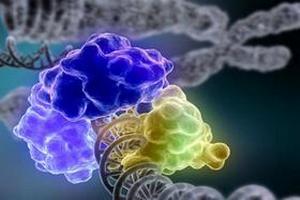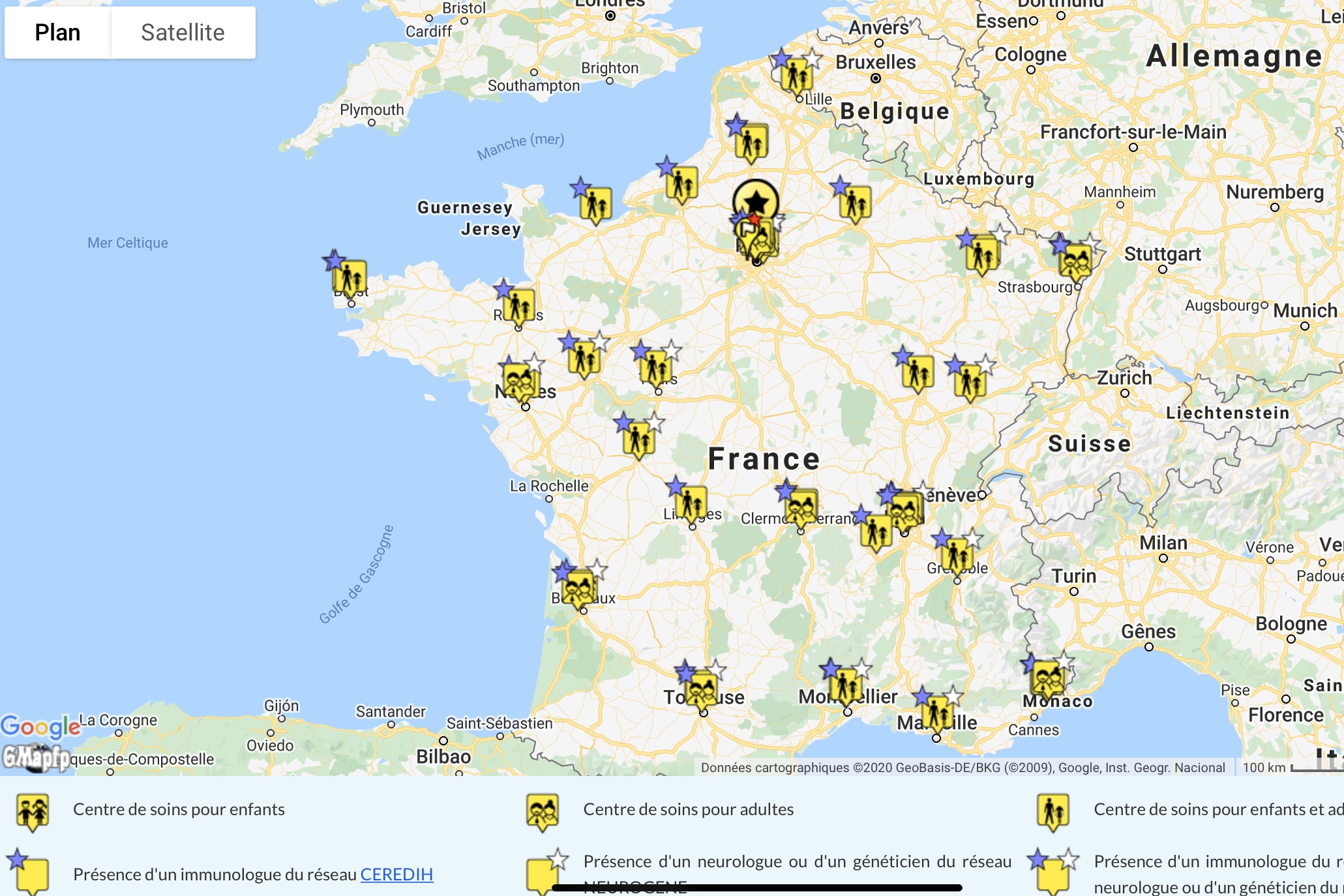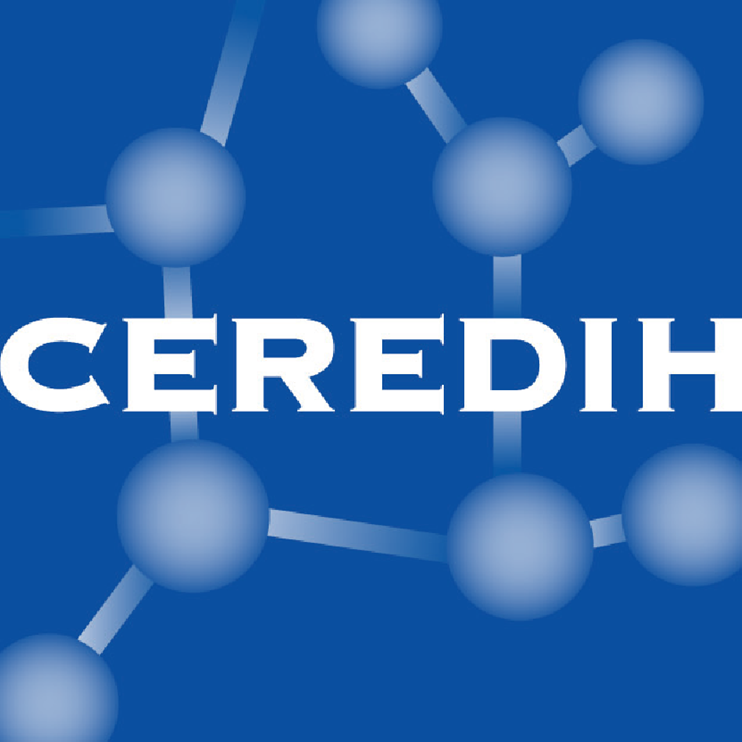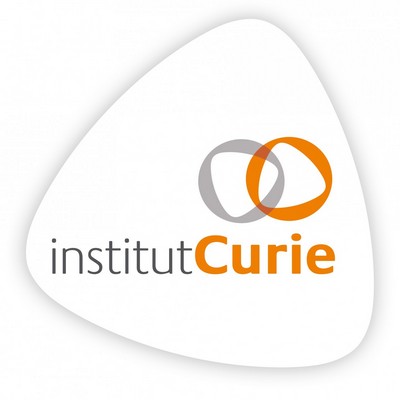Patients with ataxia telangiectasia are particularly at risk for pneumonia :
- in cases of immune deficiency
- because of possible choking
Lung diseases are a real concern for them. Their evolution, often rapid, is a real danger.
Signs and vigilance
The signs of these infections are highly variable and sometimes insidious. For example, infectious agents commonly found harmlessly in the body of the majority of people will find fertile ground for development in patients immunocompromised. These are called opportunistic infections. Eg CMV (cytomegalovirus), fungi ...
That's why you should never take lightly in a child with AT:/p>
- Fever, even low
- Cough, dry or not
- Green secretions
- Chest pain
- Difficulty for breathing or even an increase in respiratory rate. Portable devices exist and can measure easily with a clamp on a finger the oxygen rate in the blood of a patient: oximeters. These devices are commercially available, even on the Internet.
The doctor of emergency
The pneumologist generally intervenes when the infection is already well advanced, that either the immune deficit or/and the ataxia Telangiectasia have not yet been detected , either that the pathogen is past through the meshes of the net taut by the immunologist which we saw that it could not be perfect. In fact, it is essential that effective collaboration is established between these two doctors for the pneumologist can treat in the most effective way the infection.
Diagnosis
Chest radiography is often the means used by pneumonologists to diagnose.
But in the case of ataxia telangiectasia, radiation should be avoided as much as possible (see Chapter radiation ). This information given to the doctor and the radiologist should be sufficient to establish the best compromise: impact of radiation / urgency and relevance of the diagnosis.
Other means of investigation exist, but are not always suitable as they may be more invasive and, for some, may create other passages for potential pathogens:
- the bronchoalveolar washing
- transthoracic puncture (through the thorax)
- surgical lung biopsy
- and other technical innovations that appears every day
Treatments
The infectious agent is not initially known, so the pulmonologist will prescribe first a broad-spectrum antibiotic, or a combination of anti-infectives, to cover a range of the most frequent pathogens.
The choice of a more targeted treatment will be made after the results of analysis and culturing of respiratory specimens, which can take several days.
During lung infection, the alveoli being partially blocked, oxygen exchange with the blood is less efficient and the rate of oxygen in the blood is low. To remedy this, additional oxygen is provided and sometimes ventilation assistance, either with a mask, or in some cases by intubation.
But the ideal is still to remove all secretions of the respiratory system and for this, the respiratory physiotherapy has an important role. The plasticizers (N-actetyl-cysteine) can sometimes help to bronchial drainage.
Finally, some more limited but useful actions may be:
- Using saline to clean the nose
- Taking hot drinks also participates in the nasal drainage.
- Humidifying the room. If using an electrical appliance, be sure of its cleanliness./li>
- Changing the bed sheets regularly
Pneumologic evaluation
The recovery of the full capacity of the respiratory system is long and often incomplete according to the aftermath of the lung disease. In order to quantify it, there are a number of tests: pulmonary function tests or PFT. They aim to check lung capacity and quality of exchanges of oxygen into the blood. These evaluations are absolutely not painful and last generally an hour.
Prevention
Prevention prescribed by the immunologist who seeks to avoid potential infection is unfortunately not perfect.
Except for children receiving infusions of immunoglobulins, vaccination against seasonal influenza and against pneumococcal disease provides a benefit but can not cover all possible causes of lung infections.
Therefore, making prevention against the risk of lung infection is also to reduce to the maximum potential exposure of children with AT to different pathogens, reducing the chances that they reach their bodies. For this, few precautions may be sufficient:
First of all be careful: of course, be attentive to the signs described above, but also to the environment of children with AT. Ask to be informed about the sick children in the classroom, nursery or play areas and ensure that they avoid contact with them.
Respect the elementary rules of hygiene, especially when there is an infection in the family circle:
- Wash hands frequently (contamination coming often from the hands to the nose or mouth))
- blow in a throwaway paper tissue and... throw it
- cover your mouth when you sneeze and wash hands immediately
- possibly, for the sick people of the entourage, wear a mask
- spit secretions
- clear nose by blowing the nose or washing it frequently with saline. Indeed, the secretion are in fact made of mucus which has imprisoned the infectious agent: it must be evacuated.
Reduce pollutants
- If possible, choose a place of residence slightly polluted: for example, sanatoriums where tuberculosis was treated were located in altitude
- Aerate often or study the ventilation system of his home: it is now recognized that in most cases, including downtown, the inside of a poorly ventilated housing is much more polluted than the outdoor
- Choose smartly the interior materials: even if the standards are evolving, many building and decoration materials are still using highly toxic chemicals. Pay particular attention to mineral wool, sanding dust, glues, varnishes and painting. Conversely, some manufacturers propose materials, including paints, which are able to control pollution or even have antiviral properties.
- Chasing the dust: prefer the tile or the floor to the carpet. Do not multiply teddy bears, carpet, corners ...
- Maintain the lung respiratory capacity with physiotherapy, games and sports and never forget to laugh: it's an excellent exercise!






